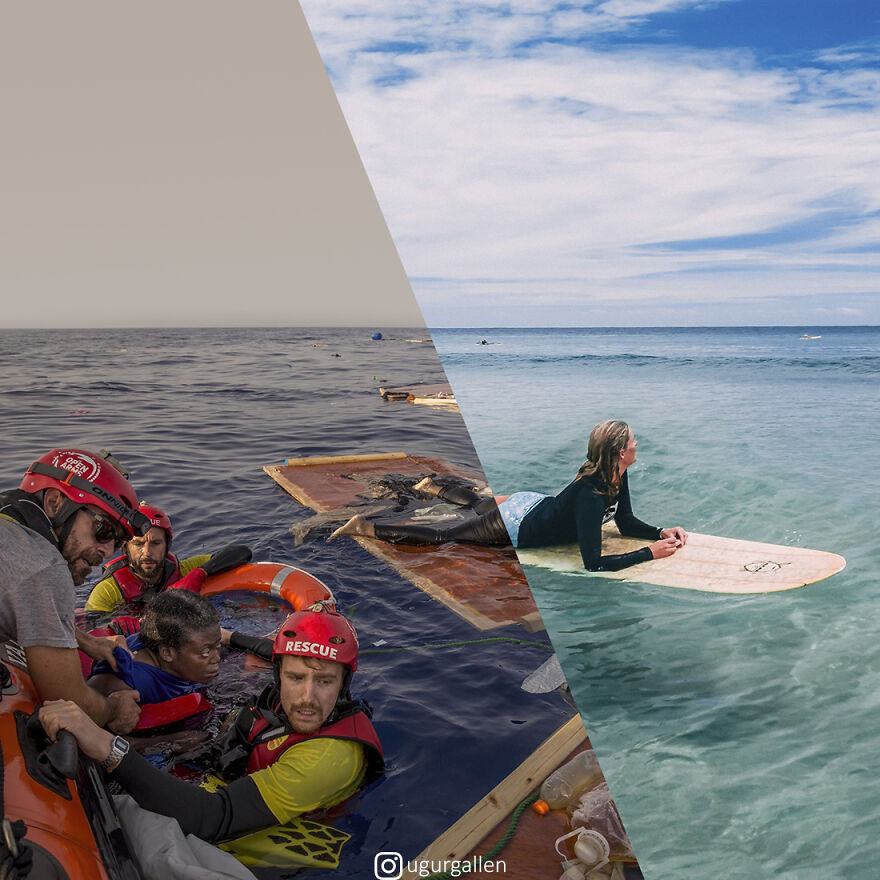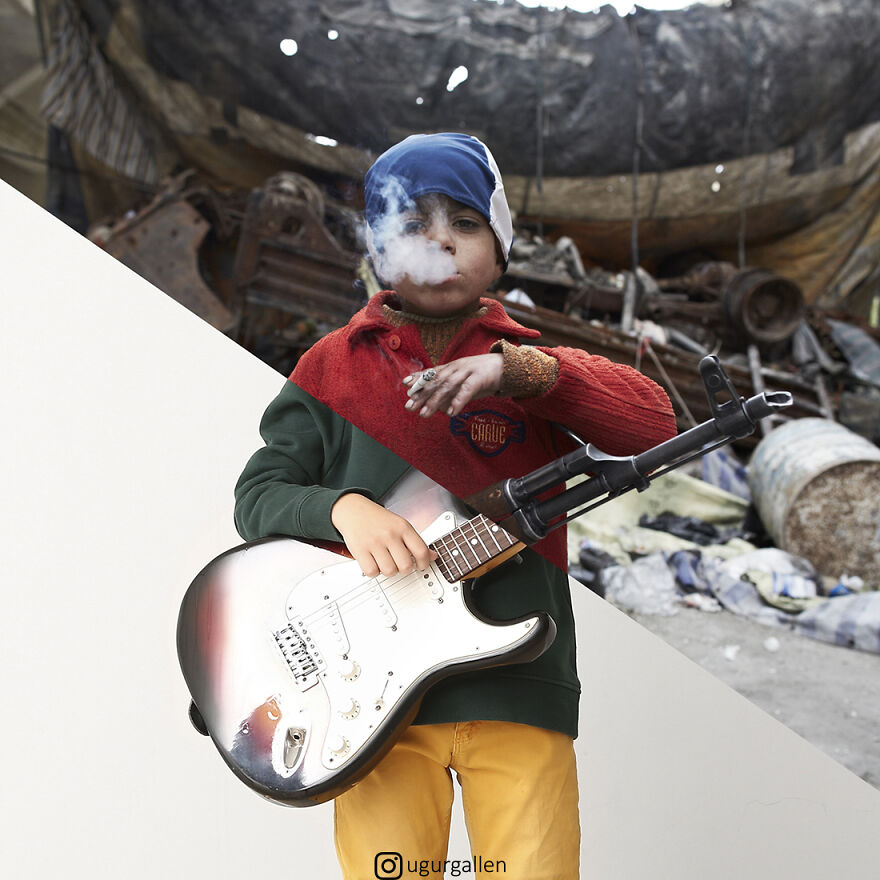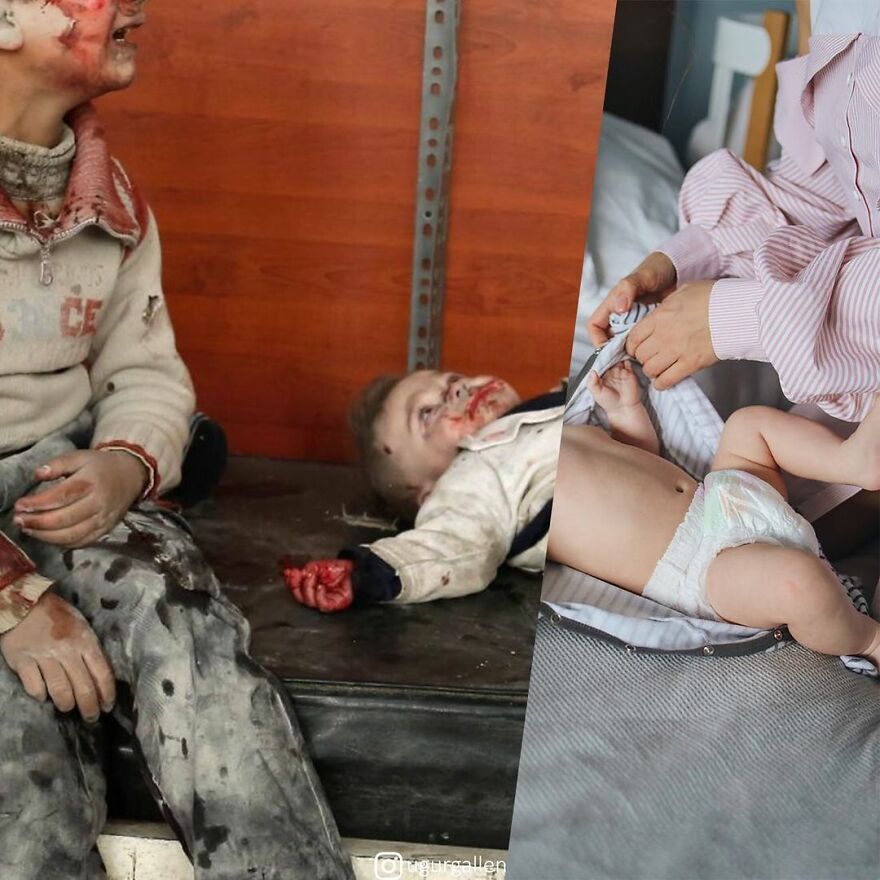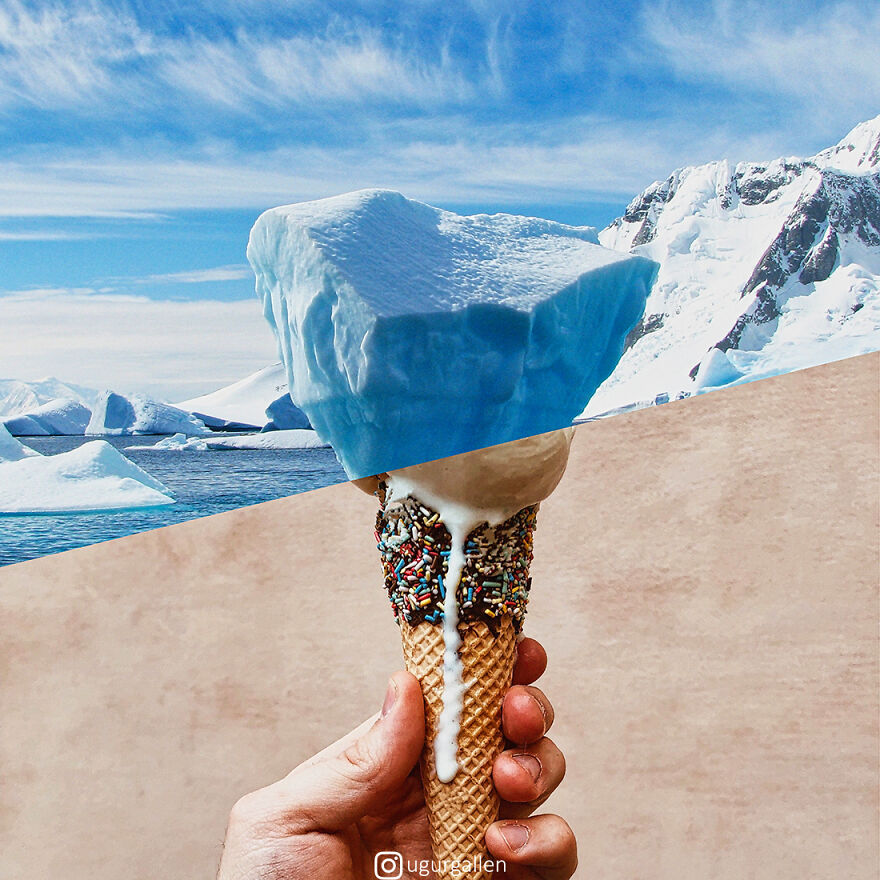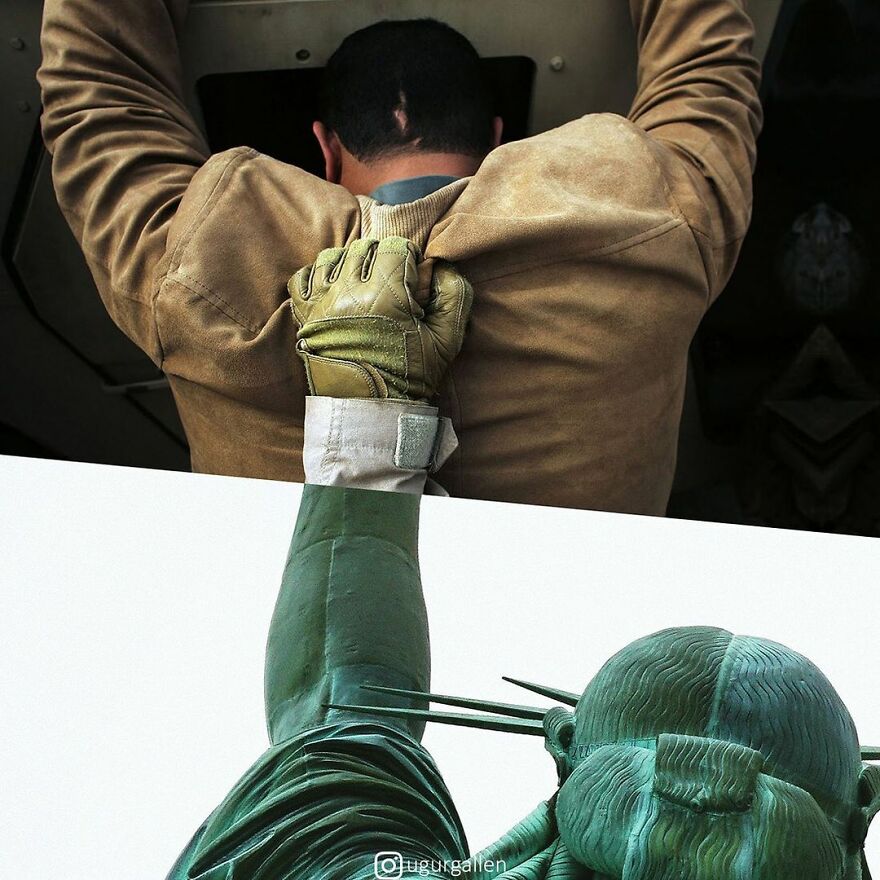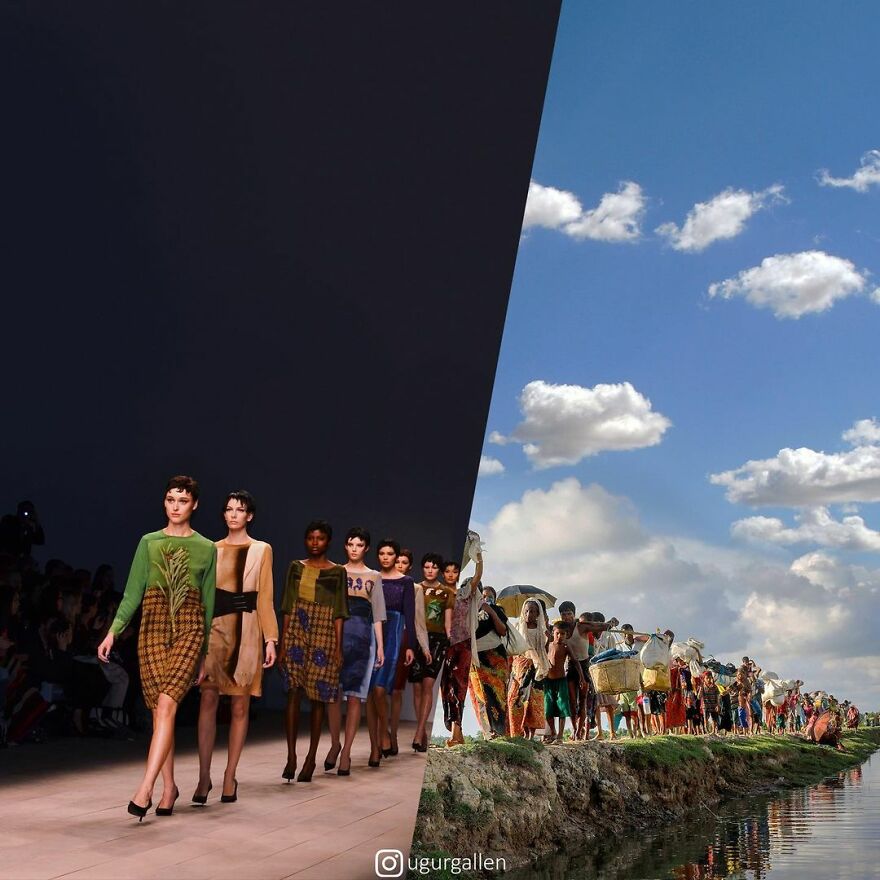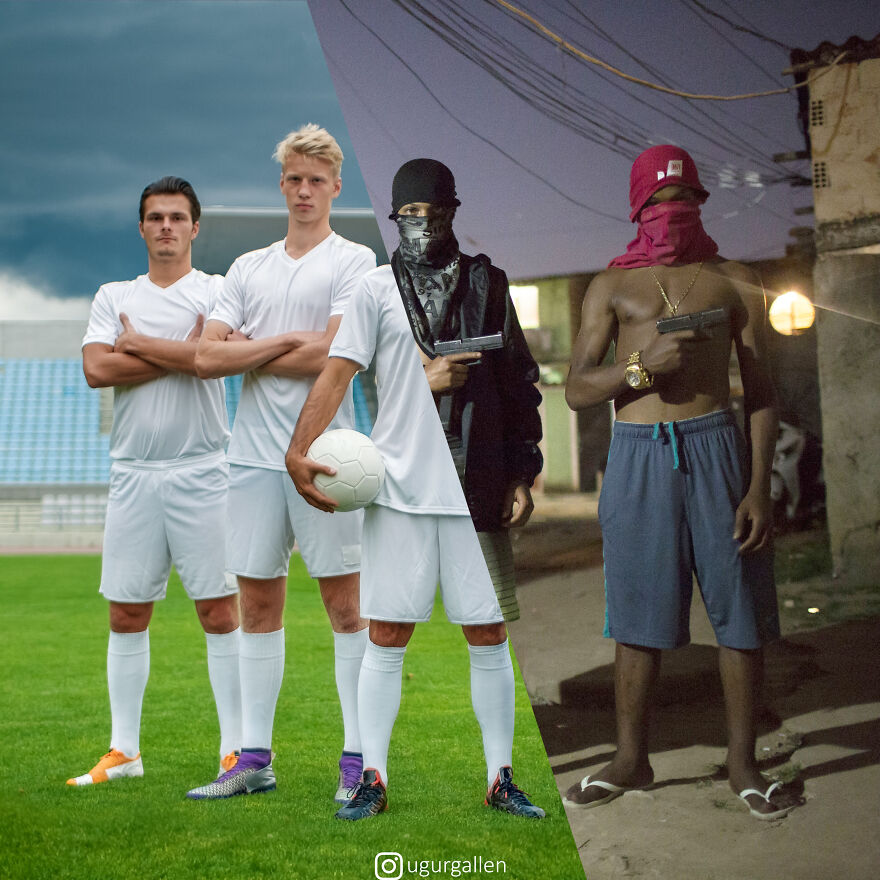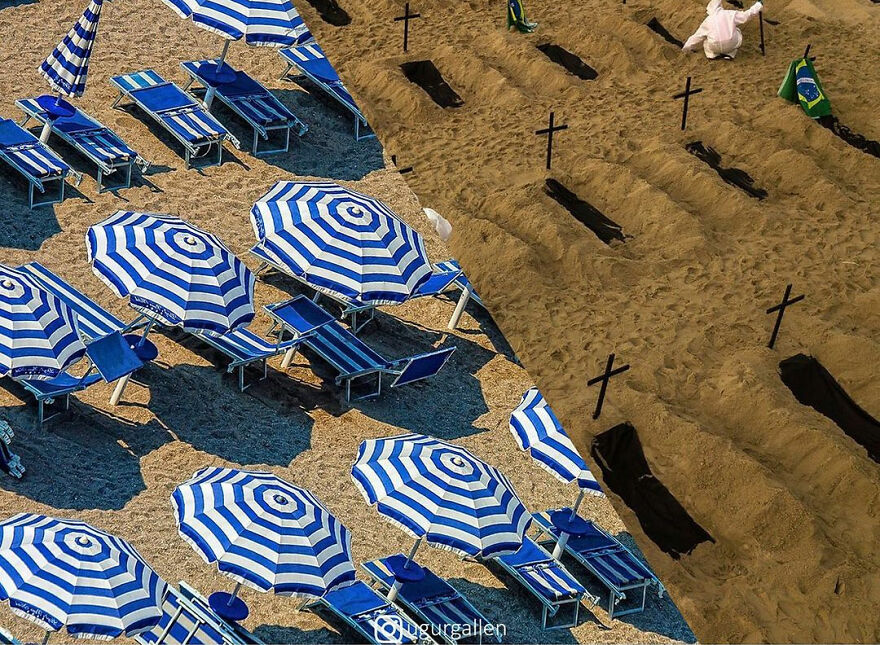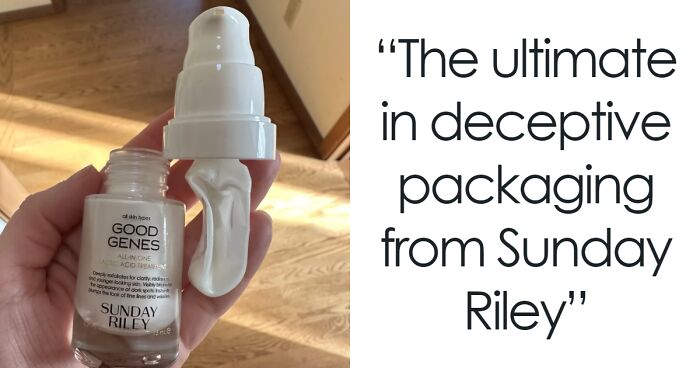
56Kviews
My 30 New Collages Show The Parallel Universes That Today’s People Live In
Hello Everyone, I'm Ugur Gallenkus from Istanbul, Turkey. I create photo collages juxtaposing two images, including the powerful pictures of some of today's most intrepid photojournalists.
I aim to showcase the significant social issues our world is facing, such as injustice, war, climate change, etc., by juxtaposing two pictures side-by-side within a single frame. Through these photography artworks, I strive to illustrate the contrasts between the two different worlds we live in and prompt reflection on making decisions that will minimize these problems by fostering empathy.
I use powerful photos of photojournalists who work under extreme conditions from all over the world. I share these thought-provoking photos and stories, and I want you to know more. Thank you. If you missed the previous issue of my collage ideas, you can see it here.
More info: Instagram
More info: Instagram
This post may include affiliate links.
Photo by Mohammed Hamoud // Legs of civilian victims are seen at a hospital after they were killed by an airstrike of the Saudi-led coalition that targeted their homes on June 25, 2018, in Amran province, north Sana’a, Yemen.
Photo by Alessio Paduano // Members of the Spanish NGO @proactivaopenarms rescue Josepha, an African migrant from Cameroon, while the body of a woman lies on a piece of driftwood about 85 miles off the Libyan coast in the Mediterranean sea on July 17, 2018.
Photo by James Oatway // A child displaced by fighting in Bunia, Democratic Republic Congo in 2018.
Photo by Aris Messinis @aris.messinis // Migrants try to pull a child out of the water as they wait to be rescued by members of Proactiva Open Arms NGO in the Mediterranean sea, some 12 nautical miles north of Libya, on October 4, 2016.
The UNHCR reports that 373,652 refugees and migrants arrived by sea to Italy, Greece, Spain, Cyprus, and Malta in 2016. An estimated 5,096 people are dead and missing in 2016.
Many communities have become refugees or immigrants for political, religious, and economic reasons throughout human history. And they/we will continue to be.
Police officers are seen outside the Capitol Building in Washington, January 6, 2021. Chaos unfolded after Trump spent weeks whipping up his supporters with false allegations of fraud in the presidential election, culminating in a call to march to the building that represents democracy. Protesters fought through police barricades, stormed the building, and entered lawmakers’ chambers.
(U) President Donald Trump delivers his inaugural address on the West Front of the U.S. Capitol on January 20, 2017, in Washington, DC. In today's inauguration ceremony, Donald J. Trump becomes the 45th president of the United States.
Photo by Carolina Rapezzi // This photograph was made in the Agbogbloshie scrapyard in Accra, Ghana, in 2018. Rashida is a water merchant, selling water mainly in the burning areas. Local workers burn scrap computer parts, wires, and other appliances in order to extract valuable raw materials like copper, aluminium and iron. Bags of pure water are used to extinguish the fires and cool down the metals after burning. One bag of pure water costs 1 Ghanaian Cedi, the equivalent of USD 0.20. Young men and women have migrated from the north of Ghana looking for better job opportunities, but they are now making a living from hazardous jobs, being constantly exposed to toxic emissions, with no health and safety regulations.
Discarders of electronic goods expect them to be recycled properly. But almost all such devices contain toxic chemicals which, even if they are recyclable, make it expensive to do so. As a result, illegal dumping has become a lucrative business. Agbogbloshie, a former wetland in Accra, Ghana, is home to the world’s largest e-waste dumping site. Boys and young men smash devices to get to the metals, especially copper. Injuries, such as burns, untreated wounds, eye damage, lung and back problems, go hand in hand with chronic nausea, anorexia, debilitating headaches, and respiratory problems. Most workers die from cancer in their 20s. via @guardian
Discarders of electronic goods expect them to be recycled properly. But almost all such devices contain toxic chemicals which, even if they are recyclable, make it expensive to do so. As a result, illegal dumping has become a lucrative business. Agbogbloshie, a former wetland in Accra, Ghana, is home to the world’s largest e-waste dumping site. Boys and young men smash devices to get to the metals, especially copper. Injuries, such as burns, untreated wounds, eye damage, lung and back problems, go hand in hand with chronic nausea, anorexia, debilitating headaches, and respiratory problems. Most workers die from cancer in their 20s. via @guardian
Photo by Rogerio Florentino // The elephant Ramba rests after arriving at the Brazilian Elephant Sanctuary located at the municipality of Chapada dos Guimaraes, Mato Grosso state, Brazil, on October 18, 2019. The Asian elephant that spent decades performing in South American circuses has started a new life in an open-air sanctuary in Brazil, after traveling thousands of kilometers by plane and truck from a Chilean zoo. The elephant, estimated to be more than 52 years old, worked in circuses in Argentina and Chile before she was rescued by activists in 2012.
Photo by Wissam Nassar // A Palestinian man holds a girl who medics said was injured in an Israeli shelling at a U.N.-run school sheltering Palestinian refugees, at a hospital in the northern Gaza Strip in 2014.
Photo by Diego Ibarra Sanchez // A man slept outside destroyed apartments in the quarantine neighborhood of Beirut, a city where the explosion the previous week killed over 150 people and left hundreds of thousands homeless.
The blast, which appeared to have been caused by a fire igniting 2,750 tonnes of ammonium nitrate left unsecured in a warehouse, was felt as far away as Cyprus, some 150 miles (240 kilometers) to the northwest.
Photo by Halit Onur Sandal // The dead body of a migrant child lies on the beach near the Aegean town of Ayvacik, Canakkale, Turkey, on Jan. 30, 2016. A boat carrying migrants to Greece hit rocks off the Turkish coast and capsized, killing at least 33 people, including five children, officials and news reports said.
Photo by Ron Haviv // Arkan's Tigers kill and kick Bosnian Muslim civilians during the first battle for Bosnia in Bijeljina, Bosnia, March 31, 1992.
Photo by Sebastiano Tomada // Ahmed, the 8-year-old son of a Free Syrian Army fighter, stands in front of a barricade where he assists Free Syrian Army fighters in the neighborhood of Salahadeen on March 27, 2013.
Photo by G.M.B. Akash // A 12-year-old child laborer in a textile factory in Narayanganj, Bangladesh, is beaten by the owner for not completing his work on time in January 2005. The boy works for ten hours a day and earns around one US dollar.
Photo by Giuseppe Carotenuto // 146 people rescued by MOAS (the Migrant Offshore Aid Station) on 24 November 2016 in the Mediterranean Sea. They were disembarked in Pozzallo on the 27th of November.
Photo by Chris Hondros // Samar Hassan, 5, screams after her parents were killed by U.S. Soldiers with the 25th Infantry Division in a shooting on January 18, 2005, in Tal Afar, Iraq. The troops fired on the Hassan family car when it unwittingly approached them during a dusk patrol in the tense northern Iraqi town. Parents Hussein and Camila Hassan were killed instantly, and son Rakan, 11, was seriously wounded in the abdomen. Rakan, paralyzed from the waist down, was treated later in the U.S.
The pains of war have been visited on thousands of Iraqis, but even here Samar’s story stands apart. Three years after her parents were killed, her brother Rakan died when an insurgent attack badly damaged the house where she lives now. Rakan had been seriously wounded in the shooting that killed their parents, and he was sent to Boston for treatment after Mr. Hondros’s photos were published. An American aid worker, Marla Ruzicka, who helped arrange for Rakan’s treatment, was herself later killed in a car bomb in Baghdad.
Samar's older sister's husband, Nathir Bashir Ali, suspects his house was bombed by insurgents as retribution for sending Rakan to the United States. “When Rakan came back from America, everyone thought I was a spy,” he said.
Photo by K.M. Asad // Soyad Ali (75), in front of his makeshift tent at Thankhali refugee camp in Teknaf, Bangladesh on September 26, 2017.
With stay-at-home orders to contain the spread of the virus, women with violent partners increasingly find themselves isolated from the people and resources that can help them.
Emerging data shows that since the outbreak of COVID-19, violence against women and girls, and particularly domestic violence, has INTENSIFIED, resulting in a spike of around 30% in some countries. Less than 40% of the women who experience violence seek the help of any sort. via @unwomen
Photo by Marios Rafael Bikos // A refugee with their child carries their belongings after the fire in Moria Refugee Camp on September 22, 2020.
Photo by Alessio Paduano // A member of the Spanish NGO Proactiva Open Arms carries a dead child about 85 miles / 137 km off the Libyan coast in the Mediterranean sea on July 17, 2018.
Photo by Joshua Irwandi // The body of a suspected COVID-19 victim lies in an Indonesian hospital. After the patient died, nurses wrapped the body in layers of plastic and applied disinfectant to help prevent the spread of the virus.
Photo by Afshin Ismaeli // A child flees the Moria refugee camp after fires completely destroyed the camp on September 9, 2020. Thousands of people have been forced to flee their homes after a fire broke out in Moria camp, destroying their homes and belongings.
Photo by Paula Bronstein @pbbphoto // At an emergency hospital, Najiba holds her nephew Shabir, age 2, who was injured from a bomb blast that killed his sister in Kabul on March 29, 2016. Najiba had to stay with the children as their mother buried her daughter. Every year the UN comes out with their report documenting the unfortunate carnage from America's 2019 longest and most costly war in history. Along with the price tag estimated in the hundreds of billions, the human toll from a 2015 UN Assistance Mission To Afghanistan (UNAMA) report stated the number of Afghan civilians killed and wounded surpassed 11,000, which was the deadliest on record for civilians in Afghanistan since the US-led invasion more than 14 years ago.
Photo by Yann Libessart // A kid looks with his grenade launchers toy in Mpoko IDP camp at Bangui International Airport, the Central African Republic in 2014.
According to The UNHCR, of the 7.1 million refugee children of school age, 3.7 million—more than half—do not go to school. “School is where refugees are given a second chance,” said Filippo Grandi, UN High Commissioner for Refugees. “We are failing refugees by not giving them the opportunity to build the skills and knowledge they need to invest in their futures.” via UNHCR
“We need to invest in refugee education or pay the price of a generation of children condemned to grow up unable to live independently, find work and be full contributors to their communities,” said Grandi.
Photo by Steve McCurry // Afghan Girl is a 1984 photographic portrait of a refugee girl, Sharbat Gula. It appeared on the June 1985 cover of National Geographic. Pashtun by ethnicity and from a rural background, Sharbat Gula's family fled their village in eastern Nangarhar during the Soviet Union's bombing of Afghanistan when she was around six years old. Along with her father, brother, and three sisters, she walked across the mountains to Pakistan to the Nasir Bagh refugee camp in 1984. Sharbat Gula was one of the students in an informal school at the Nasir Bagh refugee camp in 1984. Her photograph was taken by Steve McCurry.
The Soviet–Afghan War lasted over nine years, from December 1979 to February 1989. Insurgent groups known collectively as the mujahideen, as well as smaller Maoist groups, fought a guerrilla war against the Soviet Army and the Democratic Republic of Afghanistan government, mostly in the rural countryside. The Mujahideen were variously backed primarily by the United States, Pakistan, Iran, Saudi Arabia, China, and the United Kingdom; the conflict was a Cold War-era proxy war. Between 562,000 and 2,000,000 civilians were killed and millions of Afghans fled the country as refugees, mostly to Pakistan and Iran. via Wikipedia.
A doctor and a nurse wearing protective gear leave at the end of their shift in a corridor of the level intensive care unit, treating COVID-19 patients, at a hospital in Rome, on April 20, 2020.
Photo by Wathiq Khuzaie // U.S. marines climb up to topple a statue of Iraqi Saddam Hussein on April 9, 2003, at the al-Fardous Square in Baghdad, Iraq.
Photo by Amer Almohibany // Smoke rises from buildings following airstrikes on the rebel-held besieged town of Arbin, in the eastern Ghouta region, on the outskirts of the capital Damascus on January 8, 2018.
Photo by Felipe Dana // Refugees and migrants wait to be rescued by members of the Spanish NGO Proactiva Open Arms, after leaving Libya trying to reach European soil aboard an overcrowded rubber boat, north of the Libyan coast, Sunday, May 6, 2018. In total, 105 refugees and migrants from Bangladesh, Egypt, Nigeria, Morocco, Ghana, Pakistan, Sudan, Libya, Eritrea, and Senegal were rescued in the overcrowded rubber boat.
Of course there is extreme inequality in the world, but looking at this you'd think white people have it great and not white people don't and that it's as simple as that. This was deliberate. Look at standard advertisements in the west. Very, very diverse. But when it comes to showing inequality? Suddenly almost all the westerners are white. I shall now await my downvotes ;-P
I’m sick of doing as much as I can when it comes to humanitarian causes and the suffering of others. Then have people and artists do things like this. Awareness is crucial, but what did the artist do to help? Wants his name out, not actually helping! I try and give as much as as I can charity wise. This is exploitation unless he gives every cent to the subjects. Marcus is right
I really hope the photographer is doing more than virtue signalling. Maybe that is the case. I'm cautiously optimistic it is the case? Like you I don't like being preached to by people who I guarantee contribute less than I do to charitable causes. Just because I don't post it to social media with all the right hashtags doesn't mean I'm not doing it.
Load More Replies...Crass, banal, guilt tripping, superficial nonsense. The kind of art, and I use that term loosely, that people think is profound when in reality it says nothing. Of course some of these situations are tragic but the contrast says what? Some people have good lives and some sadly don’t. What a revelation!
What's annoying is that it all seems to be an east v west thing, with a heavy racial component as well. The Detroit slums compared to Beverly Hills is NOTHING compared to inequality in India or the Philippines. At least the poor in the west usually have the ability to catch a bus to a minimum wage job that buys them healthy food, a shared 1BR apartment with power, heat, indoor plumbing and clean water, and if the jobs are all gone you can take a $75 bus ride to the next town or state over. Bill Gates doesn't live near a dump where children burn plastic with no PPE to get at the copper.
Load More Replies...Of course there is extreme inequality in the world, but looking at this you'd think white people have it great and not white people don't and that it's as simple as that. This was deliberate. Look at standard advertisements in the west. Very, very diverse. But when it comes to showing inequality? Suddenly almost all the westerners are white. I shall now await my downvotes ;-P
I’m sick of doing as much as I can when it comes to humanitarian causes and the suffering of others. Then have people and artists do things like this. Awareness is crucial, but what did the artist do to help? Wants his name out, not actually helping! I try and give as much as as I can charity wise. This is exploitation unless he gives every cent to the subjects. Marcus is right
I really hope the photographer is doing more than virtue signalling. Maybe that is the case. I'm cautiously optimistic it is the case? Like you I don't like being preached to by people who I guarantee contribute less than I do to charitable causes. Just because I don't post it to social media with all the right hashtags doesn't mean I'm not doing it.
Load More Replies...Crass, banal, guilt tripping, superficial nonsense. The kind of art, and I use that term loosely, that people think is profound when in reality it says nothing. Of course some of these situations are tragic but the contrast says what? Some people have good lives and some sadly don’t. What a revelation!
What's annoying is that it all seems to be an east v west thing, with a heavy racial component as well. The Detroit slums compared to Beverly Hills is NOTHING compared to inequality in India or the Philippines. At least the poor in the west usually have the ability to catch a bus to a minimum wage job that buys them healthy food, a shared 1BR apartment with power, heat, indoor plumbing and clean water, and if the jobs are all gone you can take a $75 bus ride to the next town or state over. Bill Gates doesn't live near a dump where children burn plastic with no PPE to get at the copper.
Load More Replies...
 Dark Mode
Dark Mode 

 No fees, cancel anytime
No fees, cancel anytime 
















